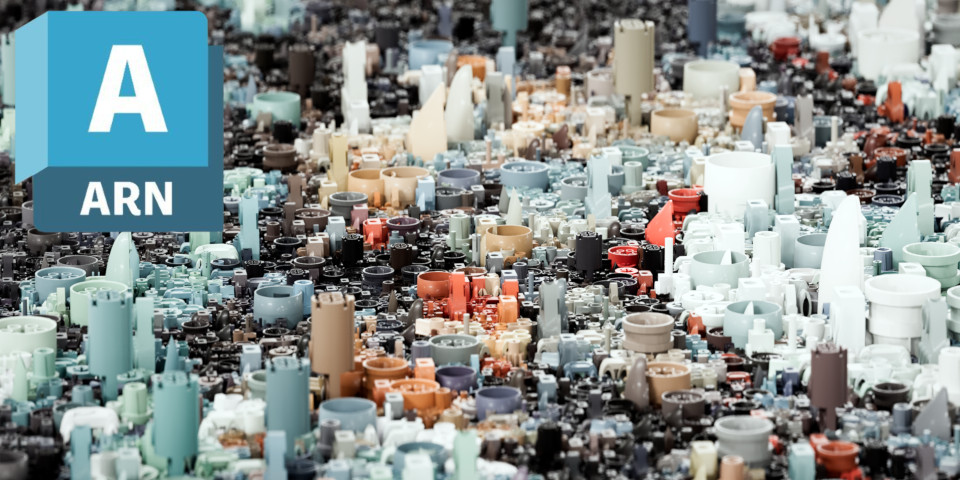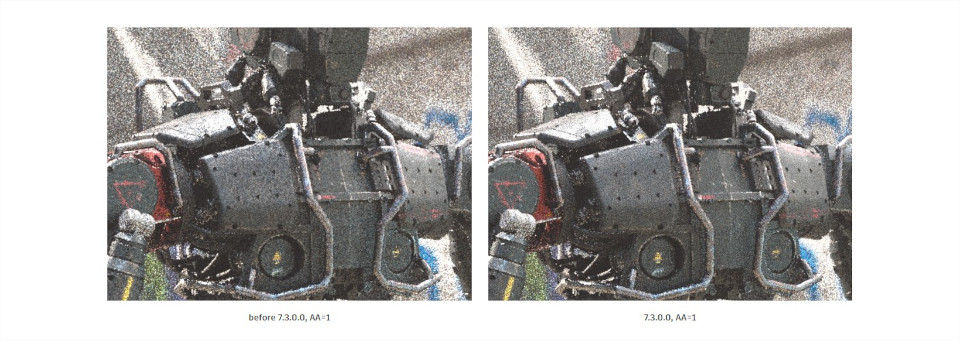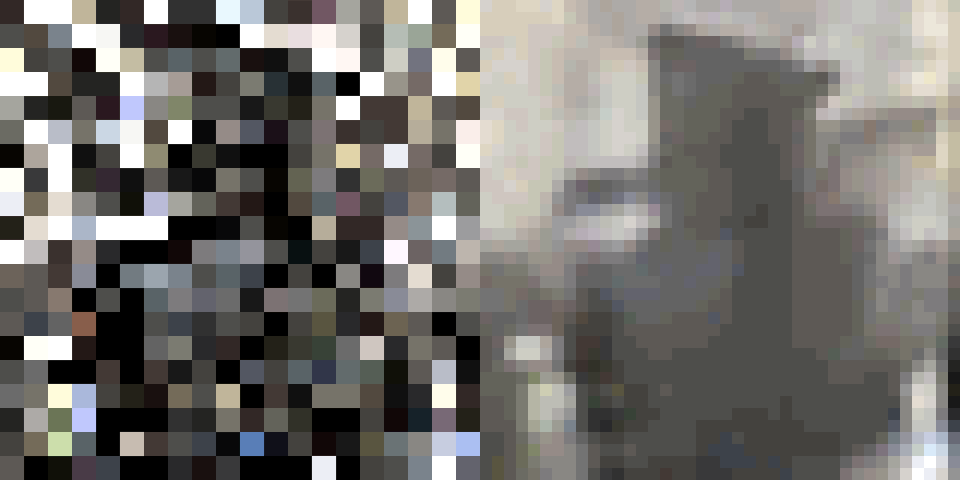Autodesk releases Arnold 7.3

Autodesk has released Arnold 7.3, the latest major version of the production renderer, in the shape of two simultaneous updates: Arnold 7.3.0 and Arnold 7.3.1.
Arnold 7.3.0 adds support for dithered sampling in progressive and adaptive rendering, improving noise distribution at low sample counts, and extends MaterialX support.
Arnold 7.3.1 improves denoising with the OptiX and OIDN denoisers.
Both became available yesterday, but Arnold 7.3.0 is the version supported by 3ds Max 2025 and Maya 2025, both also released yesterday.

Support for dithered sampling improves noise distribution in progressive renders in Arnold 7.3 (right) compared to earlier versions of the renderer.
Arnold 7.3: dithered sampling, plus improvements to MaterialX and denoising
Arnold 7.3 is Autodesk’s major annual update to the renderer, giving the firm a change to make changes under the hood that break backwards compatibility.
The major change in 7.3.0 is support for dithered sampling in progressive and adaptive renders, resulting in “much nicer” noise distributions at low AA sample values, as shown above.
Support for the MaterialX format for rich material and look dev data has been extended, making it possible to render node graphs mixing Arnold nodes with MaterialX standard library nodes.
Other changes include support for instanced lights in the Hydra render delegate, including support for visibility and matte attributes.

To that, 7.3.1 adds the option to run the NVIDIA OptiX denoiser on low-resolution progressive render passes, resulting in much less noisy early previews of a scene, as shown above.
The Intel Open Image Denoise (OIDN) denoiser has “10% better performance” on CPU, and users can now choose whether to run OIDN on CPU, GPU or automatic settings.

GPU rendering largely rewritten to use OptiX 8
Since we last wrote about Arnold, Autodesk has revamped GPU rendering, reworking a “large part” of the GPU renderer using OptiX 8, the new version of NVIDIA’s GPU ray tracing framework.
The changes, made in Arnold 7.2.5, improve performance, particularly time to first pixel in the first few renders following an Arnold upgrade, due to reduced cold cache pre-population time.
Performance also scales better to multiple GPUs, with the speed-up from a second GPU when rendering the standard Robot Soldier test scene increasing from 1.1x to 1.7x.
New features include an Overlay imager for layering text onto rendered images.
Other changes include support for global light sampling in volumes, support for secondary paths like reflections in the new distance shader, and support for toon light-group AOVs.
In addition, it is now possible to import USDZ files and render them using the USD procedural.
Support in the integration plugins
All of Arnold’s integration plugins have been updated to support the new features:
3ds Max: MAXtoA 5.7.0 and MAXtoA 5.7.1
Cinema 4D: C4DtoA 4.7.1
Houdini: HtoA 6.3.1
Katana: KtoA 4.3.1
Maya: MtoA 5.4.0 and MtoA 5.4.1
System requirements and availability
Arnold 7.3.0 and Arnold 7.3.1 are available for Windows 10+, RHEL/CentOS 7+ Linux and macOS 10.13+. Integrations are available for 3ds Max, Cinema 4D, Houdini, Katana and Maya.
GPU rendering is supported on Windows and Linux only, and requires a compatible Nvidia GPU.
The software is rental-only, with single-user subscriptions costing $50/month or $400/year.
Read a full list of new features in Arnold in the online documentation
Have your say on this story by following CG Channel on Facebook, Instagram and X (formerly Twitter). As well as being able to comment on stories, followers of our social media accounts can see videos we don’t post on the site itself, including making-ofs for the latest VFX movies, animations, games cinematics and motion graphics projects.
